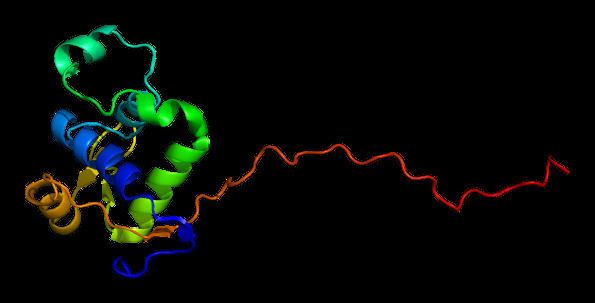EC number 3.1.-.- Human Mouse | Species Human Entrez 7486 | |
 | ||
Aliases WRN, RECQ3, RECQL2, RECQL3, Werner syndrome RecQ like helicase External IDs OMIM: 604611 MGI: 109635 HomoloGene: 6659 GeneCards: WRN | ||
"Werner syndrome ATP-dependent helicase" also known as DNA helicase, RecQ-like type 3 is an enzyme that in humans is encoded by the WRN gene. WRN is a member of the RecQ Helicase family. Helicase enzymes generally unwind and separate double-stranded DNA. These activities are necessary before DNA can be copied in preparation for cell division (DNA replication). Helicase enzymes are also critical for making a blueprint of a gene for protein production, a process called transcription. Further evidence suggests that Werner protein plays a critical role in repairing DNA. Overall, this protein helps maintain the structure and integrity of a person's DNA.
Contents
- Structure and function
- Post translational modification
- Clinical significance
- WRN deficiencies in cancer
- Interactions
- References
The WRN gene is located on the short (p) arm of chromosome 8 between positions 12 and 11.2, from base pair 31,010,319 to base pair 31,150,818.
Structure and function
WRN is a member of the RecQ Helicase family. It is the only RecQ Helicase that contains 3' to 5' exonuclease activity. These exonuclease activities include degradation of recessed 3' ends and initiation of DNA degradation from a gap in dsDNA. WRN is important in reparation of double stranded breaks, nonhomologous end joining, and base excision repair. WRN may also be important in telomere maintenance and replication, especially the replication of the G-rich sequences.
WRN is an oligomer that can act as a monomer when unwinding DNA, but as a dimer in solution or a tetramer when complexed with DNA, and has also been observed in tetrameric and hexameric forms. The diffusion of WRN has been measured to 1.62
The amino terminus of WRN is involved in both helicase and nuclease activities, while the carboxyl-terminus interacts with p53, an important tumor suppressor. WRN may function as an exonuclease in DNA repair, recombination, or replication, as well as resolution of DNA secondary structures. It is involved in branch migration at Holliday junctions, and it interacts with other DNA replication intermediates. mRNA that codes for WRN has been identified in most human tissues.
Post-translational modification
Phosphorylation of WRN at serine/threonine inhibits helicase and exonuclease activities which are important to post-replication DNA repair. De-phosphorylation at these sites enhances the catalytic activities of WRN. Phosphorylation may affect other post-translational modifications, including sumoylation and acetylation.
Methylation of WRN causes the gene to turn off. This suppresses the production of the WRN protein and its functions in DNA repair.
Clinical significance
Werner syndrome is caused by mutations in the WRN gene. More than 20 mutations in the WRN gene are known to cause Werner syndrome. Many of these mutations result in an abnormally shortened Werner protein. Evidence suggests that the altered protein is not transported into the cell nucleus, where it normally interacts with DNA. This shortened protein may also be broken down too quickly, leading to a loss of Werner protein in the cell. Without normal Werner protein in the nucleus, cells cannot perform the tasks of DNA replication, repair, and transcription. Researchers are still determining how these mutations cause the appearance of premature aging seen in Werner syndrome.
WRN deficiencies in cancer
Cells expressing limiting amounts of WRN have elevated mutation frequencies compared with wildtype cells. Increased mutation may give rise to cancer. Patients with Werner Syndrome, with homozygous mutations in the WRN gene, have an increased incidence of cancers, including soft tissue sarcomas, osteosarcoma, thyroid cancer and melanoma.
Mutations in WRN are rare in the general population. The rate of heterozygous loss of-function mutation in WRN is approximately one per million. In a Japanese population the rate is 6 per 1,000, which is higher, but still infrequent.
Mutational defects in the WRN gene are relatively rare in cancer cells compared to the frequency of epigenetic alterations in WRN that reduce WRN expression and could contribute to carcinogenesis. The situation is similar to other DNA repair genes whose expression is reduced in cancers due to mainly epigenetic alterations rather than mutations (see Frequencies of epimutations in DNA repair genes).
The table shows results of analysis of 630 human primary tumors for WRN CpG island hypermethylation. This hypermethylation caused reduced protein expression of WRN, a common event in tumorigenesis.
Interactions
Werner syndrome ATP-dependent helicase has been shown to interact with:
